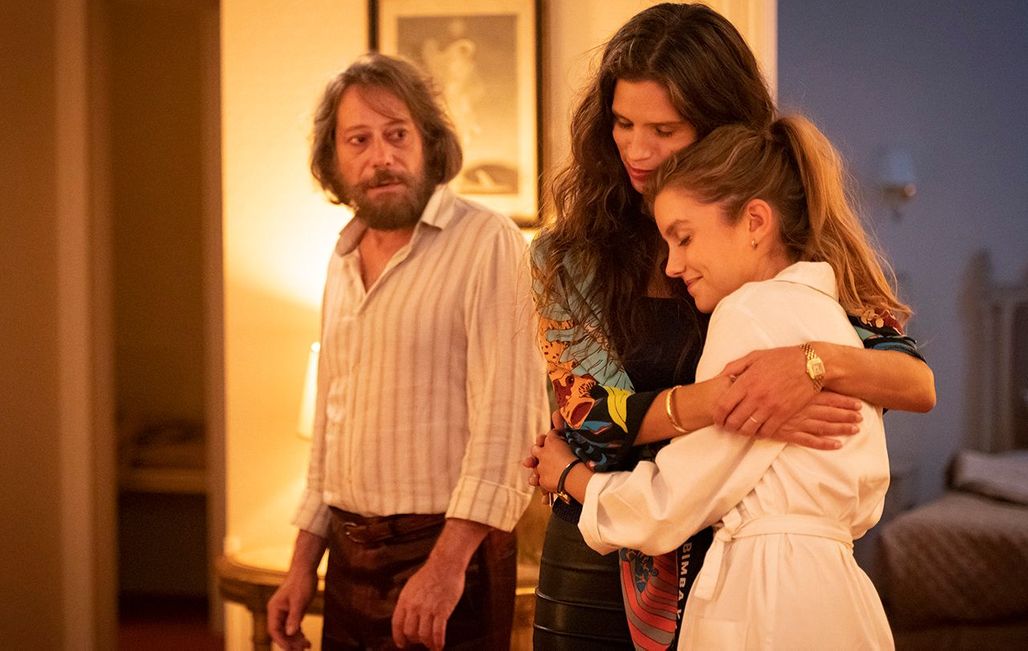
Tralala, the Tousled Musical from the Larrieu Brothers.

Tralala, a shaggy-haired forty-something, sings in the streets of Paris. One evening he is approached by a young woman who disappears suddenly. When he goes to Lourdes to see her again, he meets a woman in her sixties who believes he is her long-lost son. Tralala decides to go along with this new life that’s being offered to him. Jean-Marie and Arnaud Larrieu, the directors of this musical screening Out of Competition, look back at its origins.
How did Tralala come into being?
For a long time, we had been wanting to make a musical in Lourdes, where we grew up. One day, we had a drink with Philippe Katerine, whom we hadn’t seen in years. We had already worked with him on A Man, a Real One (Un homme, un vrai) in 2003. He was interested in writing tunes for and acting in the film. We started writing by thinking of him, in a ‘Katerinian’ spirit. The character of Tralala is inspired by Katerine’s somewhat unconventional beginnings. He had written “Sainte Vierge”, a song that intrigued us a lot and in which he tells of an apparition. He was ultimately not able to play the character as he was too busy touring. We knew, though, that he would supply the melodies and the songs of the character Tralala. Mathieu Amalric was then able to perfectly take up the baton.
“Above all, don’t be yourself.” Why did you choose this credo as the starting point of Tralala’s quest?
It comes from one of Philippe Katerine’s songs. At the time, we were looking for a mysterious phrase, something like those uttered by the apparitions of the holy virgin. And it connected really well with the character of Tralala, who is not the person the other characters in the film believe him to be. We also liked this credo because these days people are told to be themselves. So it’s a bit of a plea for lightness. Tralala interprets it as a call to change the course of his life, to leave the closed circle of identity.
Bertrand Belin is a revelation in this film…
We thought of Bertrand really quickly, as well as putting his character in contact with Mathieu Amalric’s. We’ve been following him for about fifteen years and have watched his development. In his latest concerts, we noticed that there was something characteristic of an actor in his stage presence. We knew that he had appeared in some films in small roles and we felt that he did well. We filmed his meeting with Mathieu just to get some filmed confirmation. Really early on, we knew that the relationship between the two was going to be one of the big issues of the film. An actor who’s not a singer face-to-face with a singer who’s not an actor. And then, he’s got a movie star face!
The film is sung in part, but also choreographed. How did you work on these aspects?
We wanted to see the musical be created in real time. That was the spirit we wanted to breathe into the film. The actors arrived on set having worked on their choreography. And then we added in our stage directions by watching them. The songs had been recorded in the studio. For the actors, this was also a reassuring way for them to get into character. On set, they worked with earphones but sang live. When editing we were able to balance the two, although we mainly worked on their production tracks.
What were your visual guidelines?
Weirdly, we had two contradictory principles on this question. We wanted to keep something of a documentary look, but which could change at any moment to a more sophisticated image. We wanted this to be linked to the location and that the film not get too ahead of the story its telling, that the musical come little by little.
You adapted to the use of masks. What did that bring to the film?
During the first lockdown we asked ourselves whether we should include them because we knew we were going to start shooting six months later on the streets, in Paris, in a quasi-documentary context… We couldn’t avoid them. So we conceived of a mask for each character and staging ideas to manage them. We didn’t script anything, but we were very keen that they be present visually. It’s one of those ideas that can fall flat if it’s not thought out in advance. And then, a musical with people who are masked, that’s pretty amusing. It allowed us to play who’s who. And it also resonated with the “don’t be yourself” idea!


